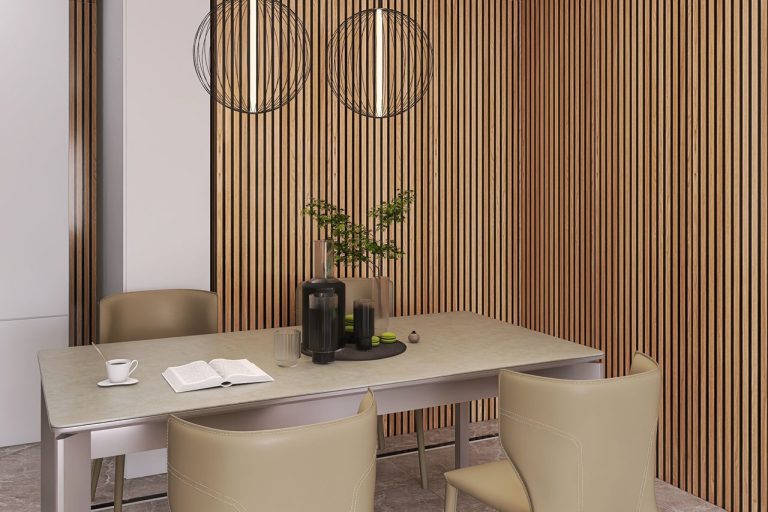Wooden Wall Panels: Transforming Interiors with Timeless StyleWooden Wall Panels: Transforming Interiors with Timeless Style

Wooden Wall Panels: Transforming Interiors with Timeless Style
Wooden wall panels are revolutionizing interior design, blending sophistication, functionality, and charm. These panels are more than mere decor; they offer a versatile and practical solution for enhancing any space. Whether it’s a cozy living room, a serene bedroom, or a professional office, wooden wall panels can transform ordinary walls into extraordinary features. Here’s an expanded look at why wooden wall panels are a must-have for modern interiors.
Why Choose Wooden Wall Panels?
Timeless Aesthetic Appeal
Wooden wall panels bring natural beauty into your home. Their rich textures and warm tones evoke elegance that blends seamlessly with various styles, from rustic farmhouse to contemporary chic. Whether you prefer light birch, deep walnut, or reclaimed wood’s unique charm, these panels cater to diverse tastes.
Exceptional Durability
Not only do wooden wall panels look stunning, but they’re also built to last. High-quality wood can withstand wear and tear, protecting your walls from damage while adding an extra layer of insulation. This dual-purpose feature ensures your home remains stylish and energy-efficient for years to come.
Versatile Design Possibilities
The versatility of wooden wall panels makes them a favorite among homeowners and designers. Available in a variety of patterns, finishes, and wood types, they can be tailored to complement any room’s theme. From vertical slats to intricate geometric designs, the options are endless.
Sustainable and Eco-Friendly
Wooden wall panels are an environmentally conscious choice. Opting for sustainably sourced wood ensures that your design decisions are kind to the planet while providing a timeless aesthetic for your interiors.
Inspiring Wooden Wall Panel Ideas for Every Room
Statement-Making Living Rooms
Transform your living room into a visual masterpiece by adding wooden wall panels. A feature wall with bold walnut panels can create a cozy focal point, while lighter wood tones bring an open, airy vibe. For an added touch of luxury, integrate LED strip lighting along the edges of the panels.
Serene Bedroom Retreats
Enhance the tranquility of your bedroom with wooden wall panels behind the bed. They double as a stunning headboard feature, adding texture and depth. Opt for geometric patterns for a contemporary look or natural planks for a rustic feel that soothes the senses.
Professional Office Spaces
Wooden wall panels can elevate the professionalism of office spaces. A sleek oak-paneled wall paired with minimalist decor promotes focus while exuding sophistication. Add potted plants or metallic accents for a balanced, modern aesthetic.
Dynamic Dining Areas
Elevate your dining experience with wooden wall panels that exude warmth and style. Designers often recommend
for their durability and aesthetic appeal. A mid-century modern look can be achieved with horizontal slats, while textured wood creates a welcoming atmosphere perfect for family gatherings.
Practical Tips for Incorporating Wooden Wall Panels
Select the Perfect Wood Type
When selecting wooden wall panels, consider the type of wood and its characteristics:
- Softwoods like pine are lightweight and budget-friendly, perfect for casual spaces.
- Hardwoods such as oak or teak offer durability and a polished look.
- Reclaimed Wood adds character with its weathered texture and unique imperfections.
Customization Matters
Personalize your panels to suit your space. Vertical paneling can make ceilings appear taller, while horizontal designs create a sense of spaciousness. Transform your office or bedroom with the unique texture of
Custom-fit panels ensure a seamless finish and enhance the overall aesthetic.
Easy Maintenance
Keeping your wooden wall panels in top condition is simple. Regular dusting with a microfiber cloth prevents buildup, and occasional polishing maintains their natural luster. For areas prone to moisture, consider sealing the wood to prevent warping.
Benefits of Wooden Wall Panels at a Glance
- Versatile Designs: Suited for modern, rustic, or transitional styles.
- Enhanced Insulation: Improves energy efficiency by maintaining indoor temperatures.
- Eco-Friendly: Supports sustainable living with renewable materials.
- Long-Lasting: Withstands wear and tear for years of use.
- Customizable: Tailored designs for unique spaces.
FAQs About Wooden Wall Panels
Are wooden wall panels suitable for small spaces?
Yes! Wooden wall panels can make small spaces appear cozier. Opt for lighter tones or vertical patterns to create an illusion of height and space.
Can wooden wall panels be installed in bathrooms or kitchens?
Absolutely! However, it’s important to choose moisture-resistant wood and apply proper sealing to protect against humidity and water damage.
How do I clean wooden wall panels?
Use a soft, damp cloth for regular cleaning and avoid harsh chemicals. For stubborn stains, a mild soap solution can be used sparingly.
What’s the average cost of wooden wall panels?
The cost varies based on wood type, size, and design. Softwoods are more affordable, while hardwoods or custom designs may cost more. Consult a professional for a detailed estimate.
Do wooden wall panels require professional installation?
While DIY installation is possible for simple designs, professional installation ensures precision and a flawless finish for intricate or large-scale projects.
Why Wooden Wall Panels Are Here to Stay
Wooden wall panels are a timeless choice for homeowners seeking a stylish and functional upgrade. Their versatility, durability, and natural beauty make them a worthwhile investment for any space. Bring an eco-friendly touch to your home by choosing sustainably sourced
Whether you’re updating a single room or embarking on a complete home renovation, wooden wall panels bring a touch of elegance that never goes out of style.
Embrace the charm and practicality of wooden wall panels and let them transform your interiors into a harmonious blend of sophistication and comfort.

